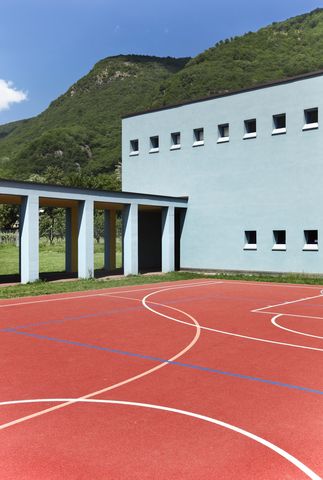Schools should be built with safety, comfort and practicality in mind. One point to consider is the type of floor coverings.
Types of Floor Coverings for Schools
- Vinyl Composition Tile – Vinyl composition tiles are perfect for schools. It perfectly suits high traffic areas including classrooms, laboratories and auditoriums due to its durability, ease of maintenance and low cost. They are resistant to abrasion, and can be repeatedly refinished using mechanical buffing equipment and chemical strippers, thereby prolonging its life.
- Rubber Flooring – Rubber flooring in schools provides a more comfortable and a safer environment in various learning areas like technics rooms, covered outdoor learning areas and gymnasiums. Sometimes rubber is installed in tiered seating areas, walkways and ramps. Rubber flooring can withstand heavy foot traffic and works well in gymnasiums and multipurpose rooms since it offers some cushioning in case of falls, and is slip resistant. It is also suited to out door areas
- Carpet – Carpet, as a floor covering in schools, helps create a friendly, welcoming and less institutional environment. Carpet makes classrooms safer by reducing the impact falls because carpet is soft. It also helps improve the comfort level of students and reduces noise. It is ideal in classrooms where children need to focus. Carpet tiles offer added flexibility in the sense that individual tiles can be replaced. However the initial outlay is greater than that of carpet. Some carpets offer anti-allergen and hygienic environments for students. These carpets won’t harbor dust mites and dirt that may be harmful.
- Wooden Floors are easy to clean and attractive indoor floors, but they will show marks such as scuff marks and scratches. To keep them looking good, they require regular polishing and remarking (if they are used for sports). They have “spring” and so are ideal for indoor courts and dance floors.
- Ceramic Tiles– Glazed ceramic is known for its durability. It is easy to clean, does not fade, has slip-resistant ability and resists scratches and stains. However they are a hard surface, and suitable where there is only a small risk of falls, and where there is heavy traffic.
Factors to Consider
Price
Carpet and vinyl are considered to be less expensive than the other types of floor coverings, so these are great choices for schools if budget is the main concern. It is also advisable to think about the cost of renovating the school floors in the future. Before doing your search, estimate your budget and determine the initial cost and the potential renovation expenses.
Durability
Ask the supplier about the longevity of the different floor coverings. If possible, go for those with at least 10-year life. In terms of durability, vinyl composition tile is recommended since it can last for a long time under normal conditions and use. It suits high traffic areas such as classrooms, laboratories and corridors. If possible, choose a floor covering which can resist stains, scratches and scuff marks for a long time.
Impact on the Person in Case of Falls
In terms of satety, choose floor coverings with anti-slip features to reduce the risk of falls.If this is your main concern, then consider choosing either the carpet or rubber floors.
Ability to Block Noise
Background noise coming from outside or inside the classroom can negatively hamper a child’s learning ability. Excessive noise may also interfere with speech audibility, which eventually leads to inability to learn and focus on the lessons imparted to students. If noise is a problem install carpet or carpet tiles.
Some interior designers agree that carpet is 10 times more effective when it comes to blocking or reducing noise in comparison to other flooring options. Hence installing carpets in classrooms will ensure that you will need only less acoustic protection on the ceiling and in other parts of the school.
To Conclude
Choosing the most suitable floor coverings for your school depends on
- the importance of noise reduction. Carpet is generally best
- the traffic – heavily trafficked areas need to be durable and easy to clean.
- whether it is an area where students are physically active and hence at greater risk of falling. Rubber is recommended, or wood in indoor court areas. Both these surface can be marked for sports.
- the risk of spills and stains Eg Science and Hospitality rooms need stain resistant floors. Vinyl composition tiles or glazed ceramic tiles are most suitable


